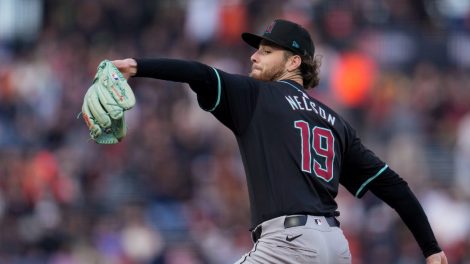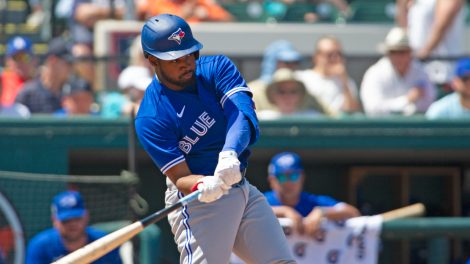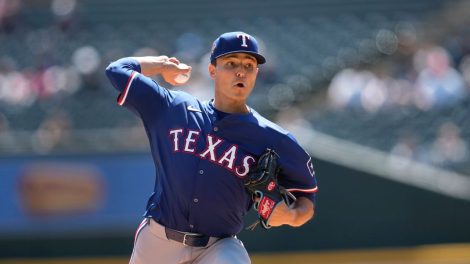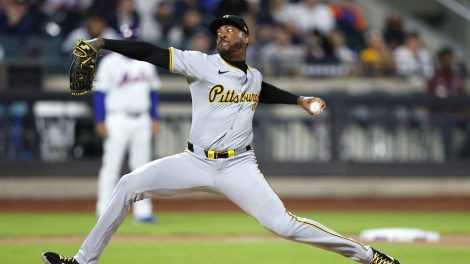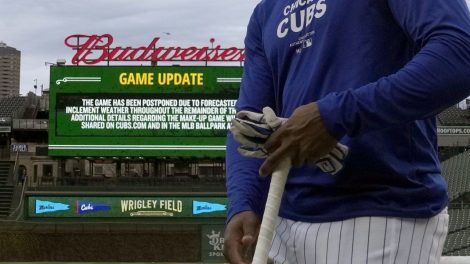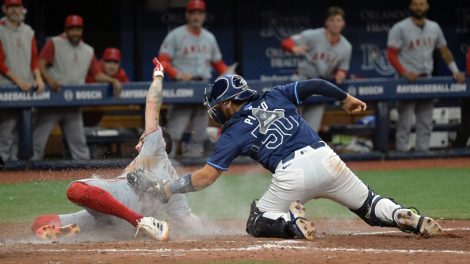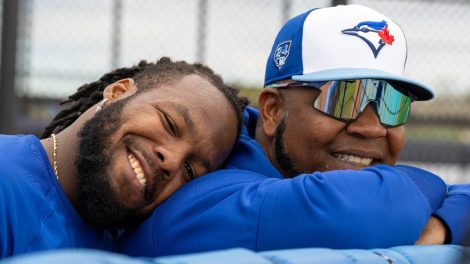Question: Do you know who led the Toronto Blue Jays organization — major and minor leagues — in strikeouts last season?
Not Marcus Stroman, not Trent Thornton, not Nate Pearson. It was an eighth-round pick in his age-23 season who entered the year with only 25.2 professional innings under his belt. Not a name you’ll see on top prospect lists, not a guy with flashy stuff, not an athletic specimen. A business management major out of Kent State University — the only Div. 1 program to offer him a scholarship — who throws his fastball in the high-80s, maybe touching the low-90s on a good day.
It was unheralded right-hander Joey Murray who struck out 169 batters over 137.1 innings in 2019, starting at mid-A and finishing his season two levels up in double-A. Over 27 appearances he pitched to a 2.75 ERA with a 2.92 xFIP. Opposition batters hit just .210 against him. He had the best statistical season of any starting pitcher in the Blue Jays system and hardly anyone seemed to notice.
Joey Murray’s 2019
| IP | ERA | K/9 | BB/9 | |
|---|---|---|---|---|
| Mid-A Lansing | 30.2 | 3.82 | 11.7 | 3.5 |
| High-A Dunedin | 63 | 1.71 | 11 | 2.7 |
| Double-A New Hampshire | 43.2 | 3.5 | 10.7 | 3.7 |
| TOTALS | 137.1 | 2.75 | 11.1 | 3.2 |
“It wasn’t surprising to us, knowing Joey,” says Blue Jays director of player development Gil Kim. “He’s intelligent, he has good stuff, he asks good questions, he constantly wants to get better, he takes advantage of every resource possible — and he’s a guy who just knows how to pitch.”
He better considering he throws his fastball slower than Pearson throws his change-up. And it’s not like Murray leans on wicked secondary stuff either. He figures he threw his fastball nearly 70 per cent of the time last season, and he knows there were days he was up over 80. And yet he put up a similar swinging strike rate (12.5 per cent) to Pearson (13.4 per cent) who’s one of the game’s best pitching prospects.
So, how does he do it? With an exceptional fastball spin rate, ranging between 2,500 and 2,700 revolutions per minute. An average of 2,600 RPM would have put Murray among MLB’s top-10 fastball spinners last season and compares with Mike Minor, who similarly relied on a low-velocity, high-spin fastball as he pitched his way to the all-star game.
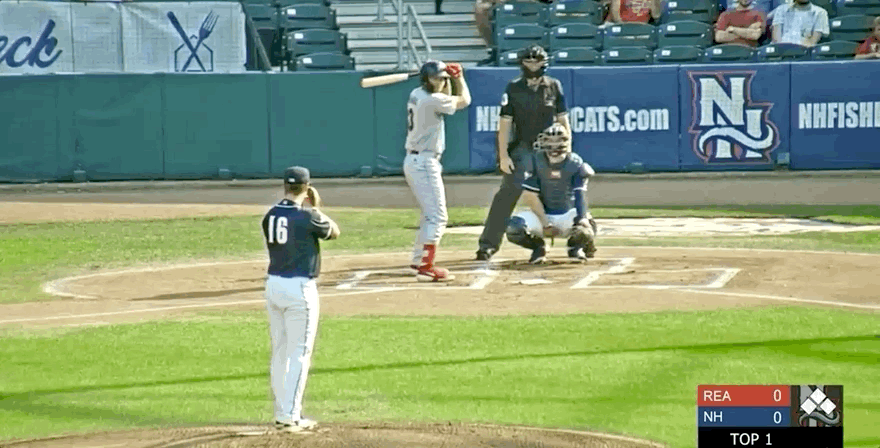
All that spin makes Murray’s heater look like a cue ball coming towards the hitter, disguising the seams and making the pitch’s trajectory more difficult to track. The spin also fights gravity, keeping the ball elevated a little longer than hitters are accustomed to as it approaches the plate, and even giving it the illusion of rising. Coming out of his three-quarters arm slot, hitters think Murray’s fastball is going one place, but it ends up somewhere else.
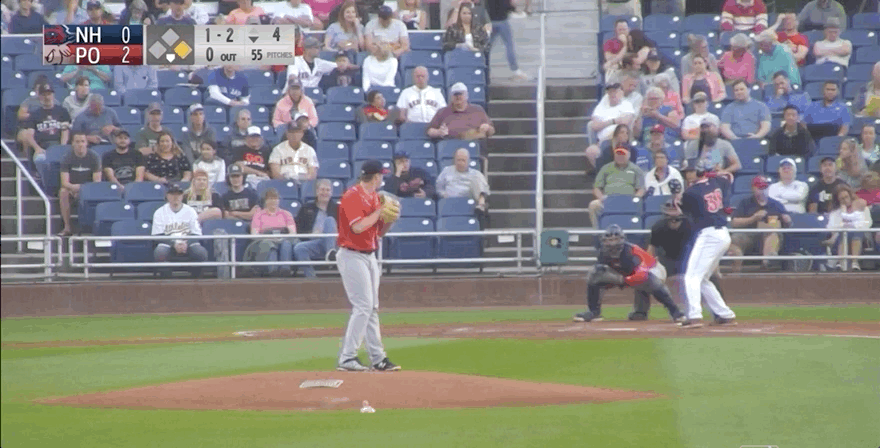
“It’s not really a secret that my 88 plays up a little bit,” he says. “It’s not necessarily something that I think about on the mound. I don’t know why I have that deception. But I’m not going to lie — it’s definitely huge for me. It helps me get away with some mistakes every once and a while.”
Those mistakes commonly occur down in the zone, where the lack of drop leaves Murray’s fastball up for hitters to tee off on. But when he’s locating it up, Murray can get plenty of weak contact or outright whiffs from bats travelling beneath the ball. Think how Marco Estrada got swing-and-miss with elevated fastballs; or how J.A. Happ could move his heater just off the barrel of a hitter’s bat.
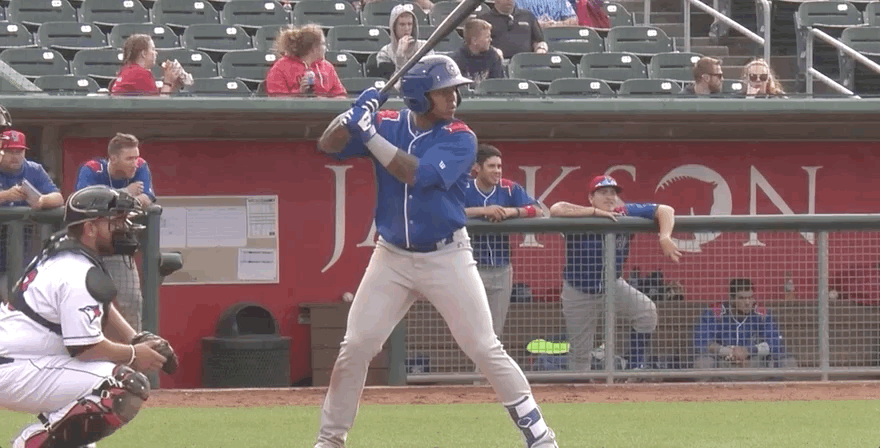
And yet, the key to Murray’s development going forward could be to use his best weapon less often. There’s no arguing with the results. But Murray’s well aware his fastball-heavy process will catch up with him as he climbs closer to the majors. More advanced hitters will figure out its trajectory and punish it if Murray doesn’t prove he can and will throw his secondary offerings — a curveball, slider, change-up, and cutter — for strikes.
The problem in 2019 was he felt like he couldn’t. Murray battled the command of his off-speed weapons intermittently throughout the season, and as his walks increased, he kept going back to the one pitch he knew he could reliably throw in the zone.
“Whatever I had working that day, that’s just what I was going to roll with,” Murray says. “And some days my fastball was all I had.”
So this past off-season was spent in the gym and the kitchen, trimming fat and adding muscle so Murray can maintain his delivery deep into outings. Last season, he felt like he didn’t have the body control to properly command his off-speed, which sapped his confidence, and led him back to his fastball. It’s a pattern he’s working hard to break.
“I’m so much more comfortable now with all of my pitches,” he says. “A lot of the time when I was out there last year, I was thinking, ‘Man, if I can just keep my walks under four today, I’ll have a really good outing.’ And that’s not the mindset I want. Especially as I move up, I really want to feel like I can be aggressive in the strike zone with every single pitch.”
Rapsodo units and Edgertronic cameras have been particularly helpful in rounding out Murray’s repertoire. He used the tools to take the spin efficiency of his curveball from 75 per cent in 2018 to around 95 per cent last season, adding vertical break to the pitch.

When he was having trouble locating it the way he wanted to last July, he looked back at the slow motion video and found that he was spinning the ball too far off its side, which was causing more horizontal action, rather than over-top of the ball, which he needs to get the downward bite that makes his curveball effective.
Commanding the pitch is crucial. If Murray can throw it where he wants to, he can drop a curveball in for a strike early in a count:

Before burying it below the zone to get hitters to chase with two strikes:
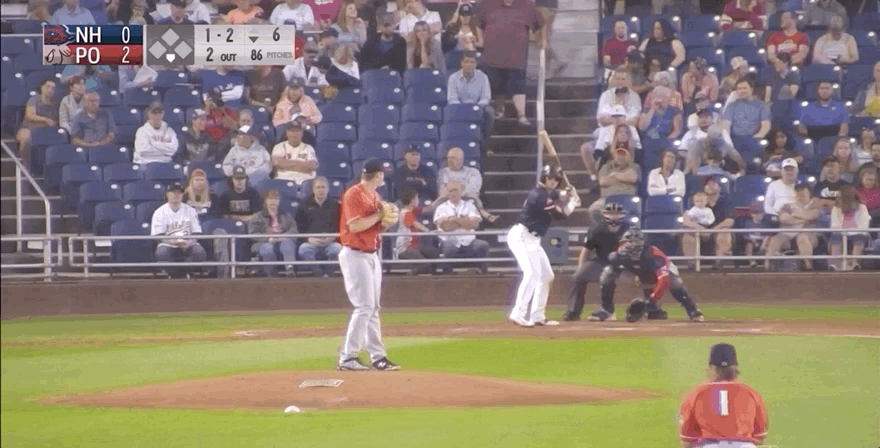
Murray is part of a group of young pitchers in the organization — including Murray’s teammates and friends Justin Dillon, Sean Wymer and Nick Allgeyer — who have bought in heavily with the advanced performance measurement tools Blue Jays developers have begun utilizing in recent years. They talk about pitch design on long bus rides; they know their spin rates and efficiencies; they’re constantly looking for ways to get better and challenging the organization to keep up with them.
“Joey’s a very analytical thinker. He dives deep into the data and information that’s available to him,” Kim says. “At the end of the day, our most important job is to help players get better. So we’re constantly getting feedback from players and getting their perspective on how we can best help them. And in recent years we’ve heard how important and useful integrating data and technology has been for guys like him. A lot of the time, it’s been the players that have been helping push us to get better — which is a really cool thing.”
Being able to throw curveballs and sliders for strikes will help Murray keep hitters off balance, while developing an effective change-up — practically every Blue Jays pitching prospect is developing a change-up — will give him a great weapon to play off that high spin fastball as he continues to face better opposition.
It’s not a front-of-the-rotation profile but Murray could certainly fit in towards the back of one if his change-up becomes a real weapon. And you don’t have to squint to see him providing plenty of value chewing innings out of a big-league bullpen in the same vein as other bulk relievers without premium stuff like Yusmeiro Petit or Josh Tomlin.
But Murray knows what makes him special, and keeps him from profiling as just another average right-hander, is that deceptive, high-80s fastball. He figures he used it as the put-away pitch on seven out of 10 strikeouts in 2019. He’s still not sure how to explain why it’s so effective. All he knows is it spins like crazy and teams these days like seeing that. And hitters have trouble seeing it at all.
“Analytics are big in today’s game. It’s a big reason why I have a job in the first place. I don’t throw hard, I went to a mid-major college — I would’ve been very easy to write off,” he says. “I’d love to throw harder. But I’ve got what I’ve got. And I think that pitchability is very much alive in the game today. Getting outs is the most important thing. Putting up zeroes on the scoreboard. That’s it. There will always be value in that.”
[relatedlinks]


